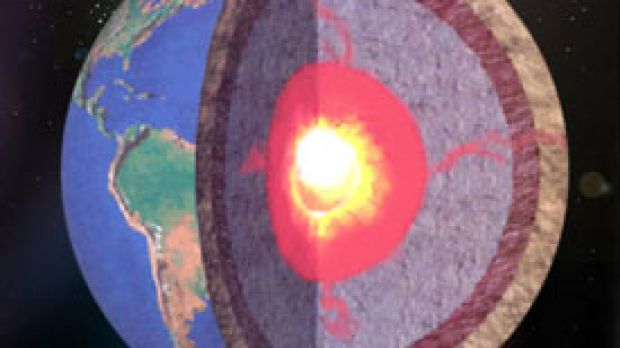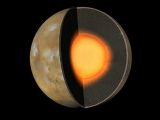Mars and Earth are now different on the surface, but recent discoveries support the idea that the Red Planet was once similar to our world, having an atmosphere and possibly even water. A new discovery shows that, although somewhat similar on the outside, the two planets are really very different to the core.
The research was carried out by scientists from Oxford University along with colleagues from University of California, Los Angeles (UCLA) and the Swiss Federal Institute of Technology in Zurich (ETH), who studied the silicon isotopes found in the cores of the two planets.
Research team member, Bastian Georg, a post doctoral researcher from Oxford University's Earth Sciences Department used the same method that another Oxford scientist, Professor Alex Halliday, employed to challenge the widely accepted theory about the formation process of the Moon, a giant impact between the early Earth and a celestial body the size of Mars.
Now, this recent study, applied comparatively to Mars, Earth and the large Asteroid Vesta, analyzed the silicon isotopes present in the three celestial bodies and came to a very interesting conclusion.
"We dissolved meteorites, provided by the Natural History Museum in London, in order to compare their isotopic composition with those of rocks from the Earth," said Georg. "The silicon was separated from other elements and the atomic proportions of isotopes measured using a particularly sophisticated mass spectrometer at the ETH in Zurich".
Professor Halliday explained that "We were quite startled at our results which showed that the heavier isotopes from silicate Earth samples contained increased proportions of the heavier isotopes of silicon. This is quite different from meteorites from the silicate portions of Mars and the large Asteroid Vesta - which do not display such an effect even though these bodies also have an iron core."
The results show that, unlike Mars and Vesta, whose silicate samples match the ones of a primitive class of meteorites called chondrites, the Earth's core did not form in the same way, a conclusion that opens the way for a whole new line of scientific investigation into how Earth's core actually formed.
"The most likely explanation is that, unlike Mars and Vesta, the Earth's silicon has been divided into two sorts - a portion that became a light element in the Earth's core dissolved in metal and the greater proportion which formed the silicon-oxygen bonded silicate of the Earth's mantle and crust," concluded Halliday.

 14 DAY TRIAL //
14 DAY TRIAL // 
